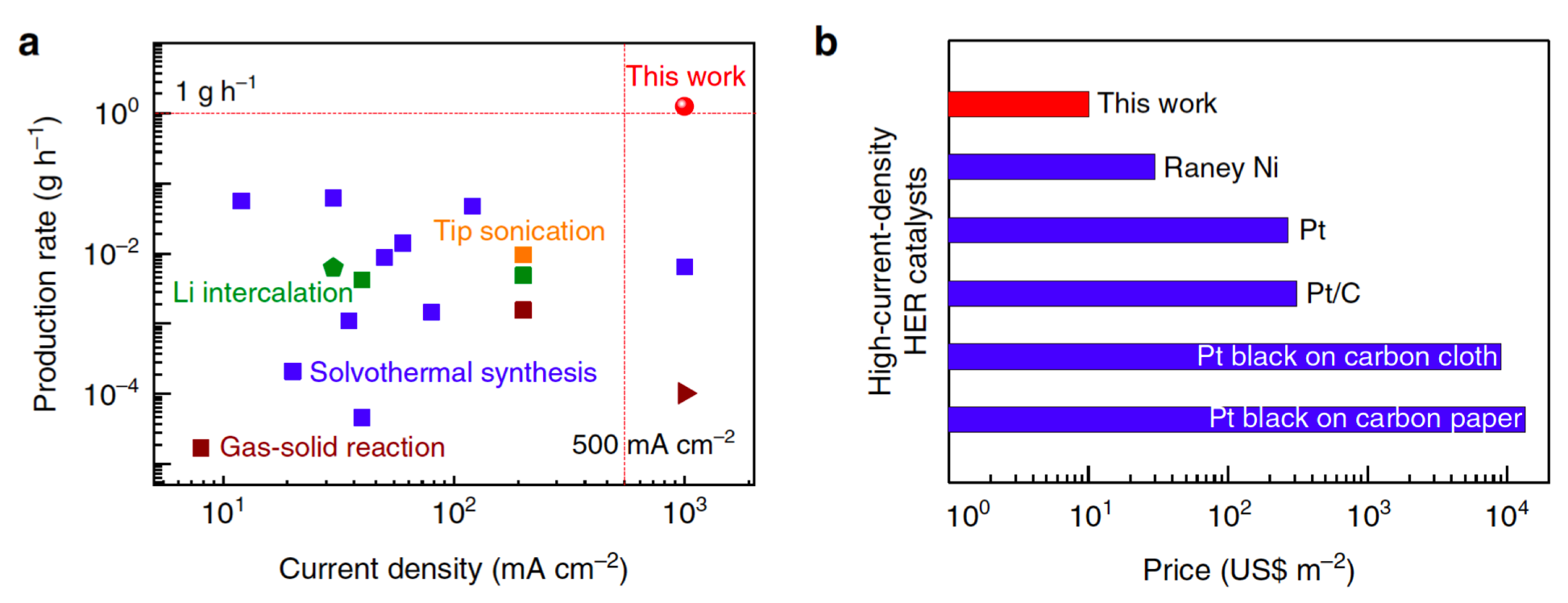The large-scale production of hydrogen by electrochemical water splitting has been proposed as a promising technology for a sustainable energy source. However, the energy consumption in the hydrogen evolution reaction (HER) is usually high, and platinum-based electrocatalysts with high HER performance are expensive. Therefore, the development of cheap, efficient, and durable electrocatalysts that work well at high current densities are the prerequisites for industrial HER application. On July 24, Associate Prof. Bilu Liu and Prof. Huiming Cheng’s group from Tsinghua-Berkeley Shenzhen Institute published a research paper titled “High-throughput production of cheap mineral-based two-dimensional electrocatalysts for high-current-density hydrogen evolution” in Nature Communications.
The group reported a high-throughput and scalable method for the production of molybdenum disulfide (MoS2)-based ink-type electrocatalysts, which combines scalable top-down exfoliation and simple thermal treatment. The electrocatalysts exhibit decent HER performance with a high current density of 1000mA cm-2 at 412 mV, a small Tafel slope of 60mV dec-1, and good stability for 24 hours. In addition, they demonstrated the feasibility of the high-throughput production method by using a cheap molybdenite concentrate from a naturally existing earth-abundant mineral and found that the mineral catalysts also show good HER performance at high current densities. Noteworthy, the production rate of this mineral-based electrocatalyst is as high as 1.3 g h-1, one to two orders of magnitude higher than those previously reported, and the price of the mineral is five orders of magnitude lower than commercial platinum-based electrocatalysts.
The results of this research are of great significance for the industrial application of two-dimensional materials and the development of high value-added applications of natural resources such as low-cost ores. Besides molybdenite minerals for HER reported in this work, this strategy could be further extended to the exfoliation of other layer materials from abundant natural resources for the mass production of electrocatalysts toward different electrochemical technologies.

Fig. 1 High-throughput production of MoS2-based ink-type electrocatalysts

Fig. 2 Comparison of the MoS2-based ink-type electrocatalysts with existing electrocatalysts
Link to full article: https://www.nature.com/articles/s41467-020-17121-8
Editor: Karen Lee


